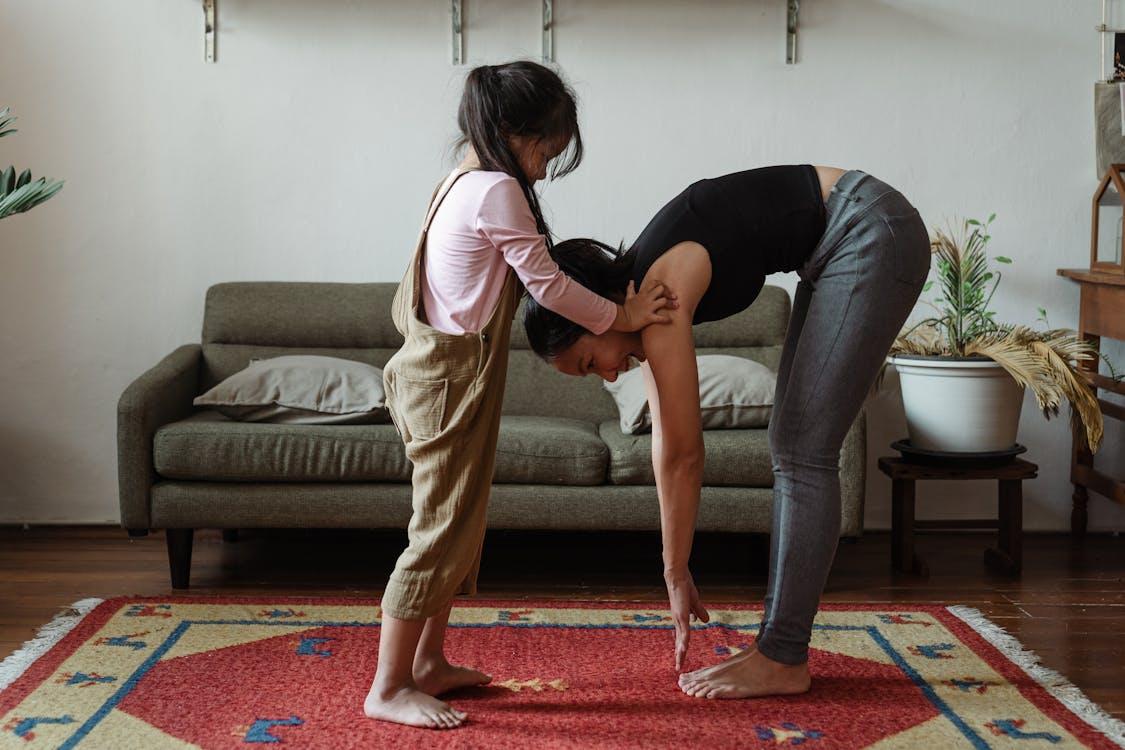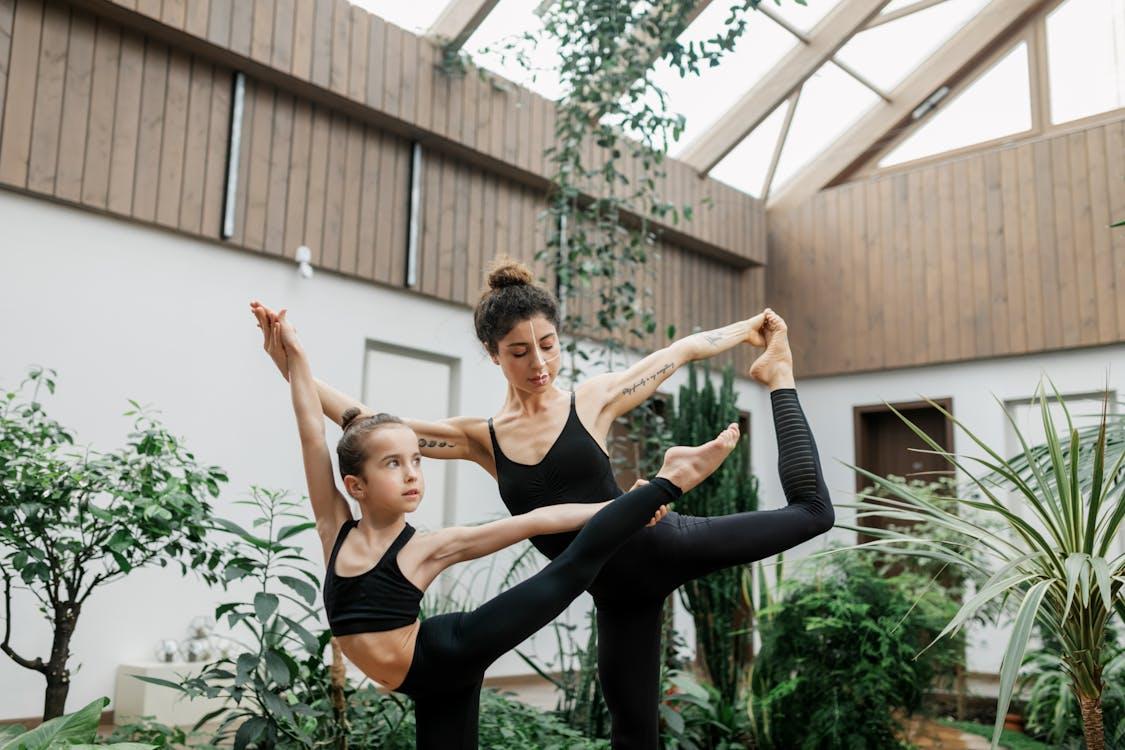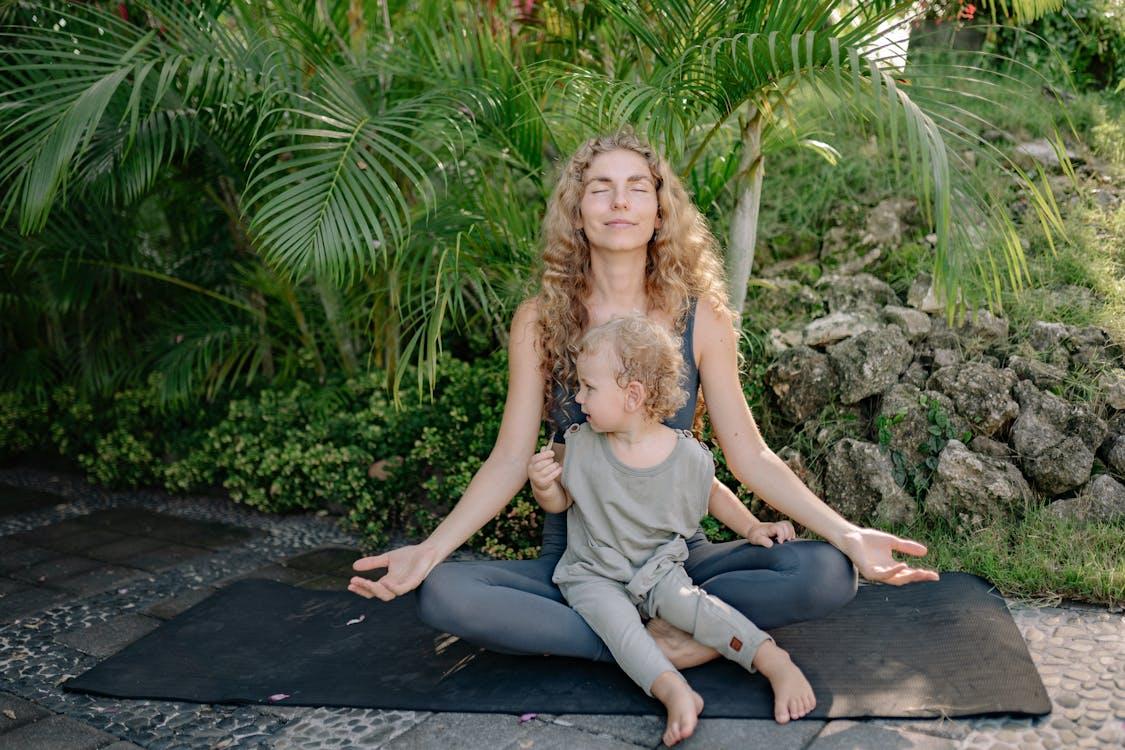Search for yoga retreats
Discover yoga retreats, holidays, and courses from worldwide.
Have you witnessed the magic of yoga firsthand and yearn to share it with the little yogis in your life? From energetic toddlers to curious teens, yoga offers a treasure trove of benefits for children, promoting flexibility, focus, self-esteem, and stress management. By incorporating yoga into their daily lives, you're laying a foundation of mindfulness and well-being that will empower them throughout their growth.
Why Yoga is Essential for Growing Minds and Bodies

Children today navigate a fast-paced world brimming with stimulation. Just like adults, they need healthy coping mechanisms. Yoga's unique blend of physical movement and relaxation provides a powerful tool for managing stress and anxiety. Regular practice instills valuable life skills such as discipline, patience, and inner calm. It fosters emotional maturity and overall well-being by helping children connect with their inner selves.
The Yoga Advantage for Children
- Enhanced Physical Health: Yoga is a fantastic way to nurture a child's developing body. Regular practice improves flexibility, crucial during growth spurts. It strengthens muscles, promotes coordination, and increases agility, reducing the risk of injuries. Balancing poses enhance body awareness and refine motor skills, essential building blocks for physical development.
- Cognitive and Emotional Benefits: Yoga goes beyond the physical, significantly impacting children's cognitive and emotional well-being. It fosters mindfulness, sharpening focus and improving attention spans. Children learn to stay present, concentrate on their breath and movements, leading to better academic performance and behavior. Yoga equips them with tools to manage stress and relax in challenging situations, building emotional resilience.
- Social Development: Children's yoga classes are more than just learning poses; they're social experiences. Practicing yoga with peers fosters teamwork and empathy. Through group activities and partner poses, children develop cooperation and communication skills. Yoga fosters inclusivity, allowing each child to progress at their own pace without competition, creating a sense of community and belonging.
Tailoring Yoga to Different Age Groups
- Toddlers (Ages 1-3): For little ones, yoga is all about exploration and fun. Keep poses and stretches simple, incorporating playful elements and imagination to maintain their engagement. Animal poses that mimic natural movements are a big hit – let them roar like lions or stretch like playful cats. Sessions should be short and lively, with fun songs or music to encourage movement and develop motor skills, all while nurturing a love for physical activity.
- Young Children (Ages 4-7): As children mature, their ability to follow instructions and focus improves. Introduce yoga through storytelling and games, seamlessly integrating basic poses. For instance, narrate a jungle adventure with poses like Tree and Cobra. These activities make yoga enjoyable while promoting flexibility and self-expression. Vivid imagery and imaginative scenarios spark children's connection with the practice.
- Older Children (Ages 8-12): Yoga sessions for this age group can become more structured, focusing on technique, balance, and coordination. By now, children can grasp and hold more complex poses, offering both physical and mental challenges. Consider incorporating mini yoga sequences and breathing exercises to enhance concentration and equip them with stress management techniques. This age group significantly benefits from the discipline and calmness that yoga fosters, establishing a foundation for a healthy lifestyle.
Weaving Yoga into Your Child's Day
- Morning Yoga Flow: Starting the day with yoga sets a positive tone. Simple stretches, like sun salutations, gently energize and strengthen the body. Introduce basic breathing exercises to increase lung capacity and teach breath control. Add a touch of fun by incorporating imaginative play, like pretending to be trees swaying in the breeze, making the morning routine enjoyable.
- After-School Yoga Unwind: After a busy day of learning and activities, yoga can help children unwind and de-stress. Focus on calming poses that ease physical and mental tension. Poses like Child's pose, happy baby, or seated twists can release muscle tension and quiet the mind. Adding fun group poses encourages social interaction and teamwork, making yoga a fun, team-building activity for after school.
- Yoga for Bedtime Bliss: Integrating yoga into the bedtime routine can significantly improve sleep quality. Gentle poses and calming breathing exercises can reduce bedtime anxiety and promote relaxation. Poses like legs-up-the-wall or lying on the back signal to the body that it's time to slow down. Guided visualizations and storytelling through poses create a peaceful transition to sleep.
Spark Creativity with Fun Yoga Poses
 Transform your home into a yoga studio with these engaging poses perfect for children:
Transform your home into a yoga studio with these engaging poses perfect for children:
- Tree Pose (Vrikshasana): Improves balance, stability, and strengthens legs and spine.
- Cat-Cow Stretch (Chakravakasana): Enhances spinal flexibility, emotional balance, and stress relief. This gentle flowing movement between arching the back and rounding it massages the spine, promoting mobility and reducing tension.
- Warrior II (Virabhadrasana II): Builds stamina, concentration, and stretches legs and hips.
- Seated Butterfly Pose (Baddha Konasana): Stretches inner thighs and knees, improves flexibility, and soothes anxiety.
- Child's Pose (Balasana): Stretches hips and thighs, reduces stress, and relaxes muscles. (We can remove the duplicate description here)
- Cobra Pose (Bhujangasana): Enhances spinal flexibility, strengthens back muscles, and relieves stress.
- Legs Up the Wall Pose (Viparita Karani): Relieves tired legs, boosts circulation, calms anxiety, and improves sleep.
- Happy Baby Pose (Ananda Balasana): Calms the brain, stretches the spine, and relieves stress.
- Seated Twist (Ardha Matsyendrasana): Stretches the spine and shoulders, improves digestion, and relieves fatigue.
- Lion Pose (Simhasana): Releases tension in the chest and face, promotes fun and relaxation.
Cultivating a Fun and Inviting Yoga Space
Here are some tips to create a dedicated yoga space that sparks children's interest:
- Pick the Perfect Spot: Select a quiet corner free from distractions.
- Spacious Sanctuary: Ensure there's enough room for full stretches without bumping into anything.
- Safety First: Use soft yoga mats and remove any sharp objects or hard furniture.
- Kid-Friendly Ambiance: Decorate with bright colors, fun patterns, and themes like animals or nature.
- Interactive Touches: Incorporate musical instruments or textured objects to engage children's senses.
- Tech Time: Utilize a small screen for guided yoga sessions.
- Personalize the Space: Let children choose colors for mats or placement of props, fostering a sense of ownership.
Nurturing Mindfulness and Meditation in Children
You don't need a yoga teacher certification to introduce mindfulness and meditation to children. Here are some simple techniques to get you started:
- Basic Mindfulness Practices: Teach children to focus on their breath using visual aids like "balloon breathing."
- Mindful Listening: Play sounds and ask children to listen attentively until they can't hear it anymore.
- Mindfulness Through Movement: Use simple yoga poses or gentle stretches to cultivate mindful movement.
- Short Meditation Sessions: Use guided imagery to help children visualize peaceful scenes.
- Breathing Buddies: Have children use a stuffed animal on their belly to watch it rise and fall as they breathe.
- Feeling and Touching: Use different textures to teach children to focus on their sense of touch.
- Gratitude Moments: Encourage children to reflect on things they're grateful for daily.
- Mindful Eating: Use snack time to practice mindful eating, focusing on the texture and taste of food.
Overcoming Challenges with Yoga for Kids
Teaching yoga to children can be incredibly rewarding, but it also comes with its own set of challenges. Here are some strategies to navigate common hurdles:
- Short Attention Spans: Keep sessions short and engaging with games and stories.
- Energy Fluctuations: Adapt the class to the children's energy levels, switching between calming and energetic exercises.
- Lack of Interest: Connect yoga to children's interests and incorporate imaginative stories.
- Difficulty with Poses: Offer pose modifications and emphasize effort over perfection.
Maintaining a Positive Learning Environment
- Set Clear Expectations: Establish simple rules for behavior during yoga sessions.
- Consistent Routine: Stick to a consistent schedule to create a sense of stability.
- Positive Reinforcement: Praise good behavior and participation to encourage effort.
Tips for Parents and Educators
- Lead by Example: Practice yoga alongside children to demonstrate its importance.
- Celebrate Milestones: Acknowledge progress and effort, not just achieving perfect poses.
- Embrace Non-Competition: Reinforce that yoga is about personal growth, not competing with others.
Adapting to Individual Needs
- Respecting Different Abilities: Modify poses and routines to suit each child's developmental stage and physical capabilities.
- Empowering Choice: Give children options within the practice to foster a sense of control.
- Visual Aids: Utilize images or videos to help children understand the poses.

Deepen Your Knowledge and Share the Gift of Yoga
For those passionate about sharing yoga with children, specialized yoga teacher training programs equip you with the knowledge and skills to effectively engage and educate young minds.
Craving More Stories?
Join our ShopYogaRetreats newsletter for the latest updates on thrilling
destinations and inspirational tales, delivered straight to your inbox!
We value your privacy. Your email address will never be shared or published.
 English
English Deutsch
Deutsch Français
Français Nederlands
Nederlands Español
Español

